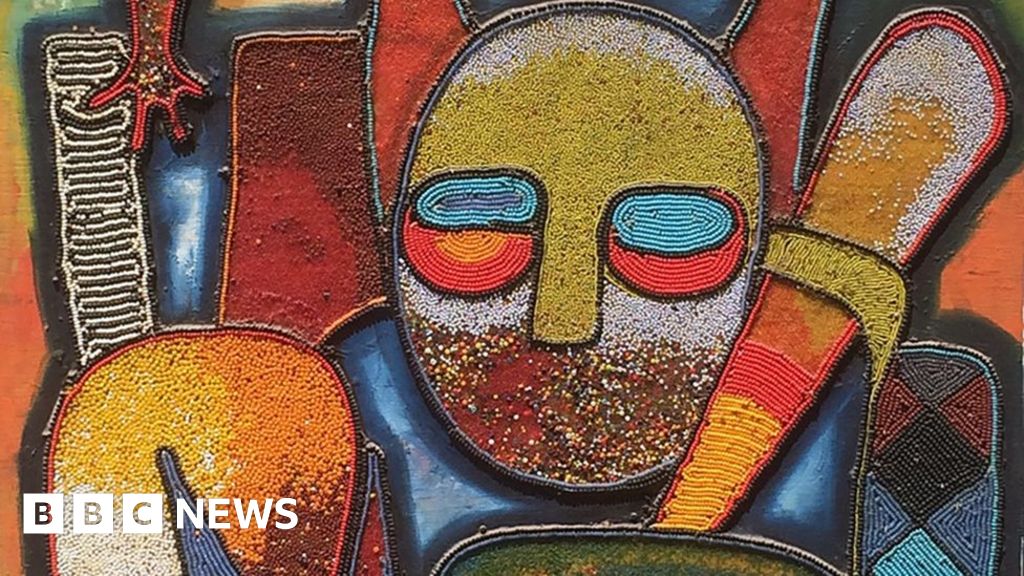'One of the greatest things' - Nigeria's art innovators on display in London

Nigerian Modernism: London Exhibition Celebrates a Century of Artistic Innovation
London's Tate Modern is showcasing "Nigerian Modernism," a landmark exhibition celebrating over a century of Nigerian artistic innovation, from 1910 to the 1990s. The ambitious presentation features the works of more than 50 artists, highlighting the blending of indigenous techniques with European styles and the evolution of Nigerian art through pivotal moments in the nation's history.
The exhibition offers a comprehensive look at a period of significant cultural and political change in Nigeria, from its colonial past to its emergence as an independent nation and the subsequent Biafran War. It explores how Nigerian artists navigated these transformations, expressing their experiences and visions through diverse mediums and styles.
A Transfer of Old Ideas into a Modern Time
Among the featured artists is 93-year-old painter and sculptor Bruce Onobrakpeya, who describes Nigerian Modernism as "a transfer of the old ideas, old items, old technologies, old thought into a different, modern time." He emphasizes that it is about "projecting the present, and showing the way towards the future." Onobrakpeya, affectionately known as Baba Bruce, expressed his excitement about the exhibition, calling it "one of the greatest things to have happened, not only to my art, but to Nigerian artwork."
The exhibition includes works that blend traditional Nigerian art forms like bronze casting, mural painting, and wood carving with European artistic conventions. Naturalistic paintings documenting real-life events are displayed alongside more abstract pieces, providing a multifaceted view of Nigerian artistic expression during the period.
Artistic Collectivity and Radical Visions
Osei Bonsu, the exhibition's curator, highlights the sense of "collectivity" that guided many of the artists. The exhibition explores instrumental art collectives such as the Nsukka Art School, an influential art department and movement founded by students and professors at the University of Nigeria.
"It is not just about the way in which artists are working on their individual artistic projects - you get the sense that almost all the artists in this exhibition are guided by a principle of collectivity," Bonsu notes.
The Biafran War's Influence
The exhibition also addresses the impact of the Biafran War (1967-1970) on Nigerian art. Works from artists associated with the Nsukka Art School reflect the turmoil and social upheaval of the conflict.
A Long Overdue Recognition
The "Nigerian Modernism" exhibition at the Tate Modern aims to illuminate a movement that has been historically underrepresented on the global stage. For many, it represents a significant step towards greater recognition and appreciation of Nigerian art history.
According to Dr. Oluwatoyin Sogbesan, a specialist in African art history at the University of Lagos, the exhibition is a crucial moment for the recognition of African contributions to global art movements. "For too long, the narrative of modern art has been dominated by Western perspectives. This exhibition provides a vital platform for Nigerian artists to tell their own stories and challenge existing art historical frameworks," Dr. Sogbesan stated.
However, some critics, like art commentator Chika Okeke-Agulu, Professor of African and African Diaspora Art at Princeton University, have raised questions about the very term "modernism" when applied to African art. Okeke-Agulu argues that it risks imposing a Western framework onto artistic practices that developed in distinct cultural and historical contexts. He suggests that a more nuanced approach is needed to fully understand the complexities of Nigerian artistic innovation during this period.
Looking to the Future
The exhibition includes a wide range of mediums, from watercolours and photography to thorn carvings and political cartoons, showcasing the diversity of Nigerian artistic talent. Artists from various ethnic groups and the Nigerian diaspora are also represented.
“It comes with a message that we can take home,” Onobrakpeya says. “It gives us hope, it gives us strength, and we’re going to work harder and we’re going to produce something even greater than this.”
"Nigerian Modernism" is open at the Tate Modern from Wednesday until 10 May next year.
Originally sourced from: BBC News Africa
